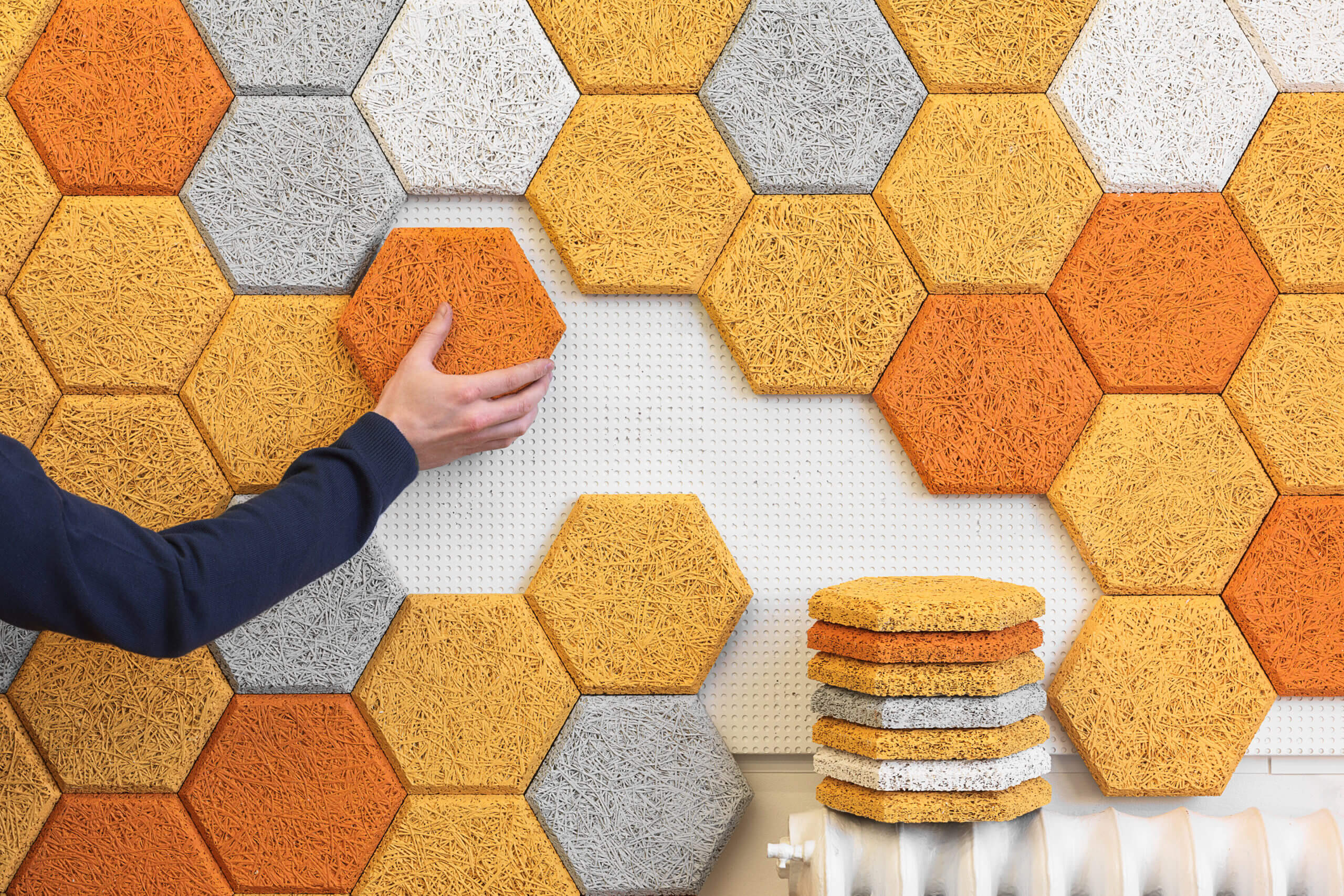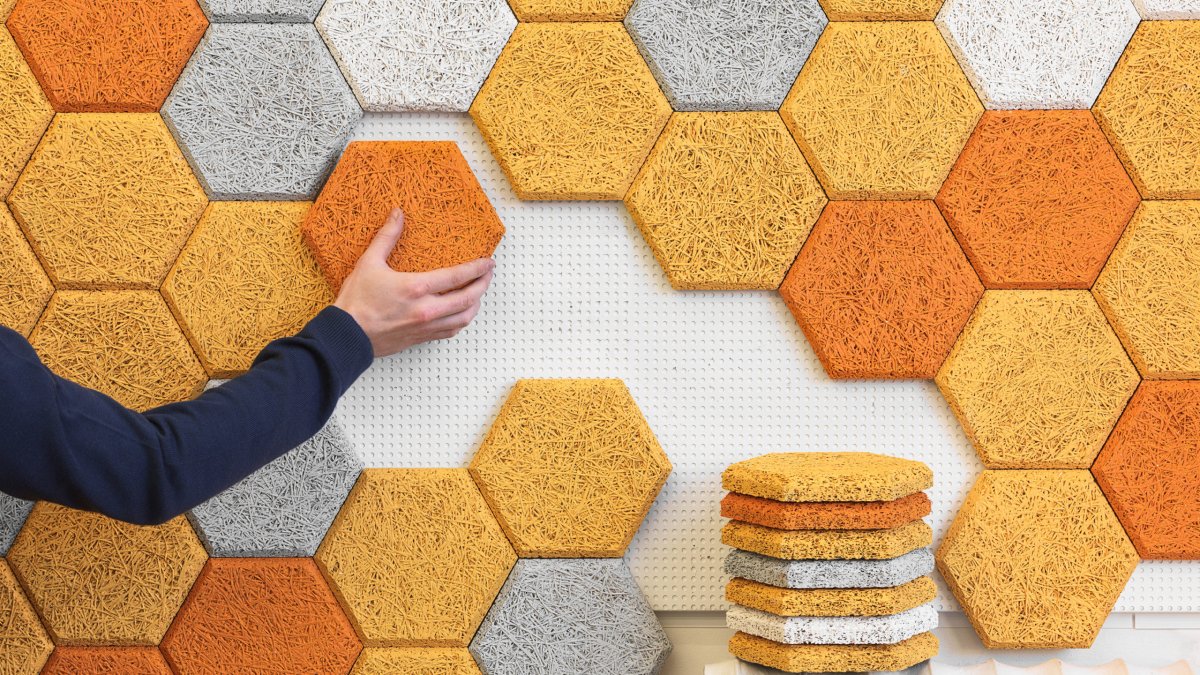
Whether you’re looking to reduce noise at your home or office, acoustic felt wall tiles can be an excellent decision to ensure your area keeps its noise integrity. In this article, we’re discussing how acoustic felt panels can help ensure that your environment is peaceful and promotes concentration.
We’re also discussing how PET felt can help keep the environment safe. Continue reading to learn more about how acoustic felt tiles can be the best option for both sound treatment and style especially along with the aesthetic lights.
Acoustic Felt Tiles for the Work Space
In a work environment, be it an office or at home, the battle becomes sealing off your space from outside noise so you can concentrate on the task at hand. Construction, traffic, children playing – there are numerous opportunities for noise pollution. Noise pollution kills concentration and productivity. Having good acoustics can improve your productivity and concentration and good acoustics depend on various factors, such as reverberation, and the acoustic dimensions of your work space.
Felt acoustic panels dampen sound in your space to ensure a more productive work environment. These tiles reduce the amount of reverberation within your office space or at-home office to create a more concentrated work environment that you can relax in.
Acoustic Felt Tiles for Your Home
Acoustic felt tiles aren’t just for a place of work. They also work beautifully for a space of relaxation in your beautiful home.
Acoustic Felt Sound Dampening Properties
Acoustic felt contains materials that have excellent sound-insulation properties. Felt reduces the vibration energy from a structure or system by modifying the material that produces the vibrational energy. For example, if you have concrete walls in your home and you line them with felt, you will reduce the sound bouncing around in the room.
Materials vibrate differently according to their physical properties. Materials also have natural frequencies and vibration frequencies. The natural frequency of a material describes how fast the material vibrates when there is no outside force acting on it. The vibrational energy of a material describes how much a material vibrates when an external force acts on it.
When a material’s vibrational frequency is equal to its natural frequency, amplification occurs. Amplification describes the process of a material increasing the size of the sound wave, making it seem louder. Adding materials that reduce the vibration frequencies will minimize the vibration of a system and its components. This type of vibration reduction results in minimizing noises you hear in a working environment.
A good measurement for this reduction can be found in the material’s noise reduction coefficient (NRC). The noise reduction coefficient of a material measures its bounceback rate and materials with lower dampening qualities produce more bounce back. Materials with higher bounce back rates have higher sound dampening qualities.
Felt Is Highly Customizable
Felt is also highly customizable, which means you can create the sound dampening design you’ve always wanted. You won’t be beholden to specific designs that may or may not fit your style. These acoustic dampening solutions come in a wide range of colors, cuts, sewing work, embroidery, and laminating. They also feature simple installation so you can feel free to customize them even further after already creating one version of art with them. On top of your own creative genius, you can use others’ creative inspiration by looking at online examples from people all over the world.
What Is PET Felt?
PET felt describes a soft, porous material made from recycled plastic bottles. Because PET felt comes from plastic bottles, it is a highly sustainable option. It also has additional advantages, such as simple maintenance and long-lasting durability. You can use PET felt again and it can be recycled.
What Are Felt’s Acoustic Properties?
PET felt’s main acoustic effect is that of sound absorption. When a sound enters a system, several things take place. Depending on the material’s construction, it can either absorb a sound or transform the sonic energy into heat. If the material only absorbs the sound partially, the rest of it will travel through the material and bounce off other surfaces, creating additional vibrational energy.
Materials that are dense, hard surfaces reflect more sound than those that are soft and porous. Porous materials dissipate sound in three primary ways. First, they can produce viscous effects within air that gets trapped inside the material, then transferring the sound energy to heat. Next, the friction between the air and porous material can transfer sound into heat. Lastly, porous materials can dampen sound by setting the material into motion with sound pressure, then turning the sound energy into kinetic energy.
The Correct Placement for Felt Tiles
To achieve the best result from your felt tiles, you should position the material at around a quarter of the wavelength from the sound source. In acoustics, this distance is referred to as the quarter-Lambda rule. Different frequencies have different wavelengths, your felt placement should adjust according to the frequencies of the noise you’re trying to dampen.
Acoustic tiles are also better at dampening high frequencies rather than low frequencies because their frequencies are smaller. Excessive sound absorption can make a room sound lifeless. You can avoid this problem by incorporating thicker sound absorption techniques.
Conclusion- What Do Acoustic Felt Tiles Do?
Acoustic felt tiles reduce the vibrational energy within a room by converting sound to heat. They do this by trapping sound in their soft, porous material. When walls are made of hard, dense materials, sounds will bounce back and forth and produce vibrations that amplify noise. Whether you’re trying to work, study, or simply relax, felt tiles can be an excellent option to reduce the vibrational energy within your room. These materials can cultivate concentration and increase your productivity.
Rachel Simmons
Related posts
Stay connected
Today's pick
- Safety Essentials Every CNC Operator Should Follow DailyCNC machining demands precision, consistency, and discipline—but above all, it requires strict attention to safety. Whether you’re working with mills, lathes, routers, or grinders, every machine has the potential to cause serious injury if mishandled. That’s why CNC operators must follow safety protocols daily, no... The post Safety Essentials Every CNC Operator Should Follow Daily […]

